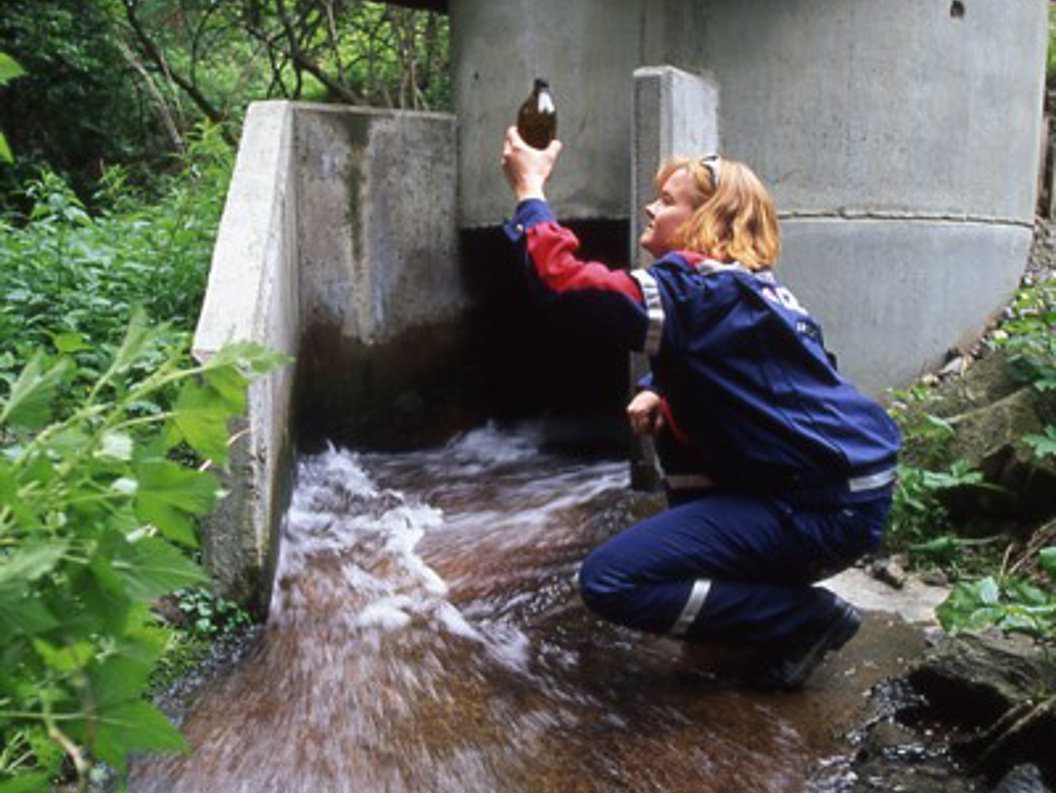Water and foundation
We regularly monitor groundwater and nearby aquatic environments at Oslo Airport to ensure that our activities do not pollute. Significant investments have also been made in systems that collect and purify pollutants before they can reach nature.

Surveillance
Oslo Airport monitors the water environment to detect pollution and changes in water quality. PFOS-contaminated areas are monitored particularly closely with frequent sampling and reporting.
Click here to go to the page.Warning
Due to air safety requirements, it is necessary to de-ice aircraft during the winter season at Oslo Airport. Oslo Airport uses the most environmentally friendly de-icing fluids available.
Click here to go to the page.
Activities at Oslo Airport shall not result in new soil contamination or a reduced environmental condition in the water environment. To ensure this does not happen, we take samples of the groundwater, streams, rivers, and lakes at Gardermoen several times a year. We have also invested significant resources in collection systems and treatment plants to prevent pollution from being released into nature.
Operational Requirements of the Airport
The Norwegian Environment Agency and Norwegian Water Resources and Energy Directorate (NVE) have set strict requirements for the operation of Oslo Airport. The Environment Agency has granted us an emission permit that determines how much de-icing chemicals, oil, and hot water we can release into the environment. We report emission data to the Environment Agency every year so they can monitor our compliance with the permit's requirements. NVE has granted us a permit that sets requirements for how we affect the groundwater balance.
We are required to monitor nearby streams, rivers, and lakes according to the provisions of the water regulations. The results from this monitoring are compiled in a separate report that is sent to the Environment Agency annually. As of 2018, this data must also be reported to the Water Environment database.
Groundwater at the Airport
Oslo Airport is located on Norway's largest groundwater reservoir. The groundwater reservoir is approximately 100 km2 in size, and the airport area covers one-tenth of this area. The depth to the groundwater table within the airport area ranges from 2-30 meters.
To keep the airplanes and runways free of ice during the winter, the runway systems and airplanes must be sprayed with de-icing chemicals. At Oslo Airport, we use formate to de-ice the runway systems and glycol to de-ice the airplanes. Some of these chemicals end up on the green areas along the runways.
The ground along the runways functions as a soil treatment facility for de-icing chemicals. In the soil, there are microorganisms that break down the chemicals, making it very rare for them to reach the groundwater. For this to happen, the microorganisms must have access to enough oxygen. In certain areas, there is too little oxygen for the de-icing chemicals to break down completely, and in these areas, we have established a system that blows air into the ground and groundwater.
The groundwater and soil at the airport are still contaminated in some areas due to previous activities before the main airport's construction, especially from military activities and activities that took place during World War II. More recently, we have also had some unintended discharges that have led to soil and groundwater contamination in certain areas. These areas are being monitored, and we have implemented measures in areas where there is a risk of pollution spreading.
In connection with fire drills, firefighting foam containing fluorinated compounds, including the environmental toxin PFOS, was used. This was before the health and environmental harmful effects of PFOS were known. Today, extensive remediation measures are being carried out at the PFOS-contaminated sites to prevent PFOS from spreading to surrounding water recipients. Treatment systems have been established that pump up groundwater, treat the groundwater in a carbon treatment facility, and pump PFOS-free groundwater back into the ground to maintain the groundwater balance. Measures are also underway to remove PFOS-contaminated materials.